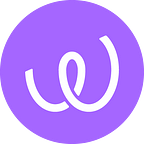Energy Web: Now Available on Azure
The release of Energy Web’s Decentralized Data Hub on Microsoft’s Azure Marketplace significantly improves user experience for enterprise
ZUG, Switzerland — 13 February 2023 — 2022 was a major turning point for Energy Web. Whereas in the past much of our effort was devoted to innovation and experimentation, last year our focus shifted entirely to execution–specifically, delivering new features and functionalities across three core solutions.
We, and our community of enterprise members, are now crystal clear about what problems we solve and how our open-source software solutions create tangible business value. The question is no longer what we’re going to build, but how to streamline implementation.
As demonstrated by many other software categories with huge addressable markets, the best way to scale adoption and impact is to make our solutions available on-demand, with the click of a button. Or in other words, make EW-DOS look and feel like conventional enterprise Software-as-a-Service (SaaS).
In December we took the first step in this direction with the release of RPC on AWS Marketplace. Today we’re pleased to announce another step forward with the release of Data Exchange client gateway on the Azure Marketplace. This is an important milestone, as it represents our first core enterprise solution component to be made available with a seamless user experience, and without the need for specialized technical resources.
What is the Data Exchange Client Gateway, and why does it matter?
The Data Exchange Client Gateway is a key component of Energy Web’s Data Exchange solution: it’s the application that provides the UI and APIs for interacting with shared messaging infrastructure to send, receive, and authenticate messages. One of the main value propositions of the client gateway is providing a single, standardized integration method for many independent organizations to exchange information across various messaging channels.
The client gateway was developed in support of the Data Exchange solutions deployed in Project EDGE and Project Symphony in Australia. These projects are demonstrating how a shared industry data hub can enable better utilization of customer-owned, distributed energy resources (“DER”, such as rooftop solar and battery storage systems) by improving coordination between AEMO (the national grid and wholesale market operator), distribution network utilities, and aggregators. Compared to the status quo approach to data sharing, which relies on a multitude of point-to-point integrations between individual companies, a shared data hub will help enhance DER visibility and ensure consistency across market participants, while maintaining standard cybersecurity and reducing costs to industry.
There are several dozen other markets around the world that need similar solutions for sharing and validating DER data among multiple entities, especially in the US (where regulations like FERC 222 are removing barriers to DER market participation) and Europe (where coordination between transmission and distribution grid operators is a regulatory priority). As Energy Web we see a major opportunity for our Data Exchange solution to unlock the full potential of DER all over the world, and so making the Client Gateway as user-friendly as possible as at the heart of our technology roadmap.
DDHub on Azure: How it Works and Why it Matters
The EDGE and Symphony trials have been ongoing since 2022 and while overall results have validated the value of a shared data hub, a key lesson learned is that integration needs to be simpler.
The Client Gateway is an independent application that each market participant runs within an environment of their choice. Up until now, the process of deploying and maintaining Client Gateways across multiple companies was complex, manual, and required specialized technical knowledge of advanced topics like containers and orchestration.
The reality is that not all electricity market participants have the internal capabilities to manage this manual deployment model and even those that do don’t always have spare capacity. Further complicating matters, because this approach requires each company to independently download, install, and configure the Client Gateway application, coordinating both initial installations and ongoing maintenance and update releases was challenging and time-consuming.
Making the Client Gateway available on Azure obviates the need for any specialized IT resources and reduces the time to install the application by 90%. Additionally, participants are able to natively integrate the Client Gateway application with other Azure services (for example, Azure Key Vault) that they already use and need to integrate with the shared data hub. Taken together, this means the Energy Web Data Exchange solution is not only better positioned to support existing projects, but production-grade solutions in any other market.
Conclusion
2023 is going to be a pivotal year for Energy Web, as the global energy transition is hitting an inflection point right as we’re evolving from delivering individual projects to delivering software solutions that are repeatable and scalable. Our whole focus is simplifying the user experience for enterprises to adopt these solutions not just in the innovation sandbox, but the core operational business.
Making the Data Exchange Client Gateway available as an Azure marketplace offering is an important step in realizing our vision of a complete EW-DOS-aaS. Going forward, in the near term we will continue to expand marketplace offerings. Later in Q1 we will share additional updates on our plans to make all of our solutions available “as-a-Service” via managed service, third-party resellers, and fully self-hosted options.
About Energy Web
Energy Web is a global non-profit accelerating the clean energy transition by developing open-source technology solutions for energy systems. Our enterprise-grade solutions improve coordination across complex energy markets, unlocking the full potential of clean, distributed energy resources for businesses, grid operators, and customers. Our solutions for enterprise asset management, data exchange, and Green Proofs, our tool for registering and tracking low-carbon products, are underpinned by the Energy Web Chain, the world’s first public blockchain tailored to the energy sector. The Energy Web ecosystem comprises leading utilities, renewable energy developers, grid operators, corporate energy buyers, automotive, IoT, telecommunications leaders, and more. More information on Energy Web can be found at www.energyweb.org or follow us on Twitter @EnergyWebX
